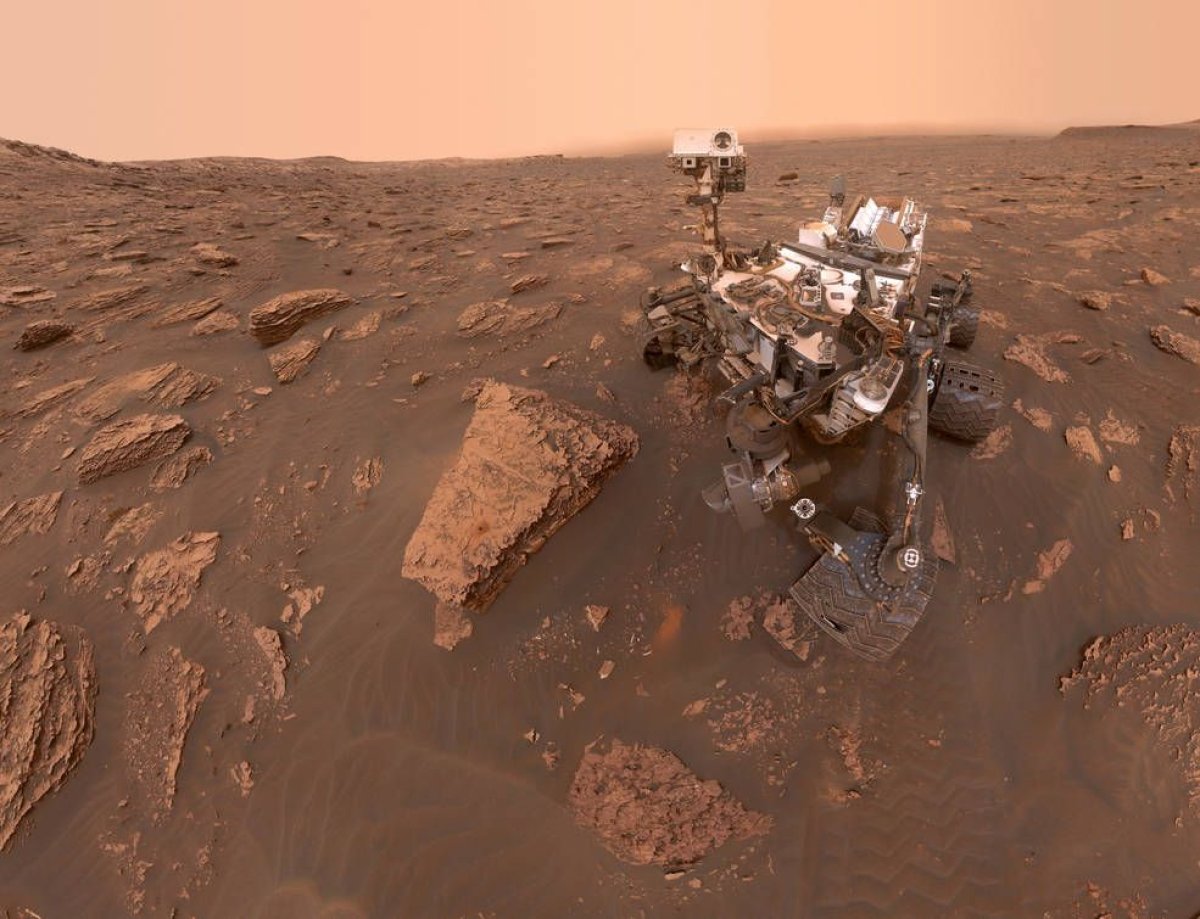Earlier this month, NASA reported an enormous dust storm larger than North America had forced the agency to switch off most of its Opportunity rover's functions. Now that storm has swelled, engulfing the entire planet in what the agency calls a "planet-encircling" dust event.
Attempts to make contact with Opportunity over the past few days have failed, and the future of the rover seems uncertain.

NASA's Curiosity rover—which is trundling along the other side of the sandy planet—has captured apocalyptic-looking scenes of a thickening butterscotch haze blotting out the sky. These scenes could spell real trouble for Opportunity, which is swaddled in a blanket of darkness in Mars' Perseverance Valley. Dust is currently blocking out the craft's main source of power: sunlight.
Opportunity is currently operating on a low power mode, running just a mission clock. Engineers hope it will stay warm enough to survive temperature variations on the Martian surface. Although they limit available power to the rover, dust storms, NASA stated, can actually keep temperatures relatively stable. If the rover survives, it should make contact with NASA as it starts to wake up.
It's hard to say how long Opportunity can survive in this low power mode, Paul Meacham, lead systems engineer on Europe's ExoMars Rover Vehicle Project, told Newsweek. "It depends on the level of charge in the batteries at the start of the dust storm, exactly how cold it gets and for how long," the Airbus engineer said. "In addition, the batteries are now 14 years old and have lost capacity over time as they have been charged and discharged."
Opportunity has been exploring Mars since 2004—some 14 years beyond its original 90-day mission. It survived an earlier dust storm back in 2007, when it switched to minimal operations for two weeks before waking up and resuming investigations.
Recent data, NASA reported, suggest Opportunity can weather the current storm too, but the agency won't know for sure until the sky eventually clears. "Our analysis indicates that the rover will not get too cold," John Callas, project manager on NASA's Mars Exploration Rover Project, told Newsweek. "Although the rover is unpowered for lack of sunlight, it should stay warm enough."
Related: This bacteria could help humans to colonize Mars, hunt for alien life
Curiosity—which is exploring Mars' Gale Crater—has recorded its highest ever tau rating: a measure of atmospheric haze, NASA reported. It's no longer possible to accurately measure the thickness of the haze over Opportunity.

Although the current storm is huge, it hasn't totally obscured Mars' surface. At the moment its swaths of dust are fragmentary and uneven. No-one knows how it will develop in the coming days, however. NASA will continue to listen out for signals from Opportunity.
Unlike Opportunity, Curiosity is nuclear-powered. Its technicians, NASA reported, think the dust storm presents little threat to the rover—but its cameras will need more exposure time to take photos in reduced lighting conditions.
Related: Is there life on Mars? This rover wants to find out
Launched in 2011, Curiosity has been rolling over the surface of Mars for six years, taking incredible photos and scooping up samples of alien sand. Recently it discovered potential evidence of ancient life on the planet in the form of organic matter. The ExoMars rover is set to drill deep into the surface in the hunt for life after it blasts off for Mars in two years' time.
Although dust storms are common on Mars, few have been observed, Bruce Cantor from Malin Space Science Systems, told Newsweek. "With so many spacecraft observing Mars—two European orbiters, three US orbiters and two rovers on the surface—we will gain some more insight to what causes...these planet-encircling clouds of dust," he said. "There are a number of theories as to how these events form and now we can begin to test them."
Observations of the current storm may help engineers improve future rovers, Meacham said. "It can help with the thermal and power modeling for future missions, making our modeling of how dust affects the amount of power generated and the dissipation of heat more accurate."
This kind of data may also help scientists learn how to predict the dramatic storms, Cantor, who is is deputy principal investigator of a camera on NASA's Mars Reconnaissance Orbiter, said. "This is important [for] when someday we send people to the Red Planet," he added.
"A human mission may also use solar panels for power generation...reduced power would be far more detrimental for a human mission due to the life-support systems that would be critical for the survival of the astronauts," Meacham explained. "Dust storms are not localised to any one area of Mars, so it's not possible to pick a location which would see them less frequently. However, dust storms are seasonal, so it might be possible to target a human mission outside this season."
Updated | This article has been updated to include comment from Bruce Cantor, Paul Meacham and John Callas.
Uncommon Knowledge
Newsweek is committed to challenging conventional wisdom and finding connections in the search for common ground.
Newsweek is committed to challenging conventional wisdom and finding connections in the search for common ground.
About the writer
Katherine Hignett is a reporter based in London. She currently covers current affairs, health and science. Prior to joining Newsweek ... Read more
To read how Newsweek uses AI as a newsroom tool, Click here.








